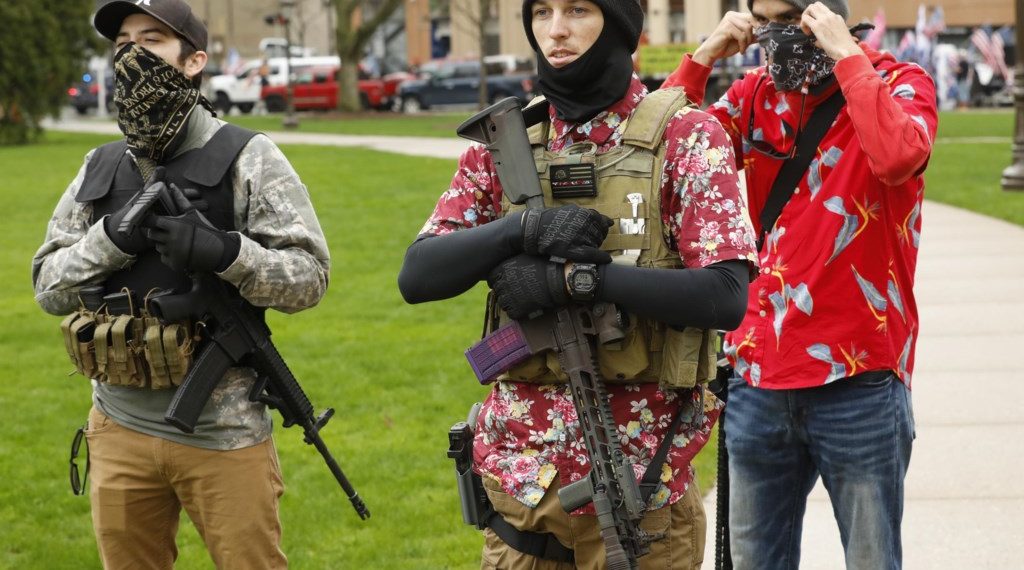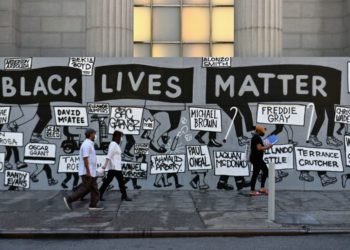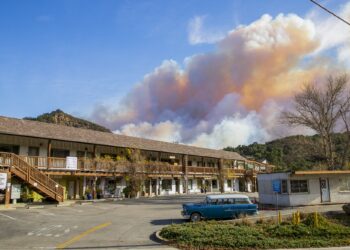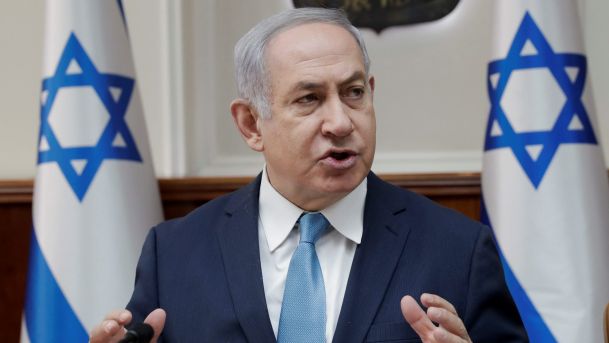A far-right movement whose followers have appeared heavily armed at recent US protests has suddenly become one of the biggest worries of law enforcement, after one member killed two California police officers.
Few had heard of the Boogaloo movement before this year. But on Tuesday, the Justice Department charged one of its followers, California Air Force Sergeant Steven Carrillo, with the drive-by killing of an Oakland police officer during the May 29 Black Lives Matter protests.
Eight days later, Carillo killed another policeman in an ambush after his van was discovered — laden with weapons and bomb-making materials — near Santa Cruz.
After he was captured, Carillo wrote “boog” on the hood of a car in his own blood, along with “I became unreasonable,” a popular resistance meme in the extreme right.
Carillo’s killings marked the rise of the stridently anti-police and anti-authority movement, which promotes a “boogaloo” — a new civil war.
They came just after the May 30 arrest in Las Vegas of three self-styled “Boogaloo bois” who had assembled weapons and Molotov cocktails with the aim of sparking violence during a Black Lives Matter protest.
Other recent cases include a follower in Texas charged on April 11 with making a terroristic threat after he posted a video saying he was going to ambush and murder a police officer.
A Denver, Colorado Boogaloo supporter was arrested on May 1 with pipe bombs in his possession ahead of a rally against coronavirus restrictions that he had planned to attend.
And also in early May, police arrested members of a heavily armed gang of white men with Boogaloo ties in West Odessa, Texas after they confronted a police SWAT team seeking to close a bar that had opened in defiance of pandemic lockdown rules.
Not Organized
Boogaloo has been used as a term for insurrection and civil war for several years by gamers and in underground chatrooms.
It comes from the 1984 breakdance movie Breakin’ 2: Electric Boogaloo, which mostly white, male, pro-gun, anti-authority followers have twisted into Civil War 2: Electric Boogaloo.
They are not organized, and the ideology shares followers with some neo-Nazi and white supremacist groups, as well as with libertarians and anarchists.
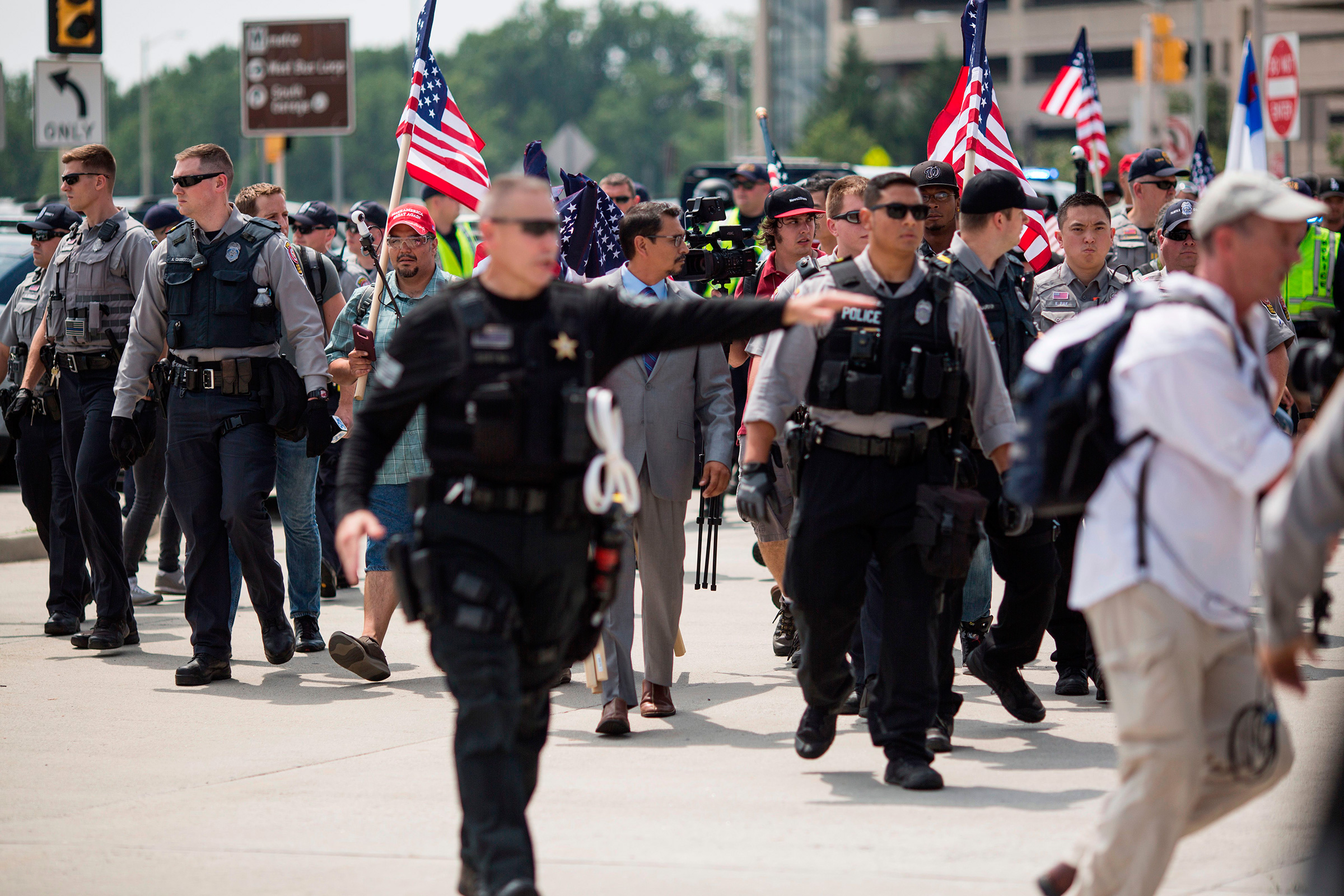
But they are distinguished by their dislike of police and government authority and their embrace of assault weapons and military tactical vests, sometimes worn over flowery Hawaiian shirts, an inside joke for the group.
“Boogaloo is slang for civil/revolutionary war. But the subgroups that use this slang fall into different categories, and they wouldn’t like each other much if they ever tried to actually form a cohesive movement,” said JJ MacNab of George Washington University’s Program on Extremism.
“They share jargon, outfits, a love of firearms, and a desire to use violence to gain power, but they don’t actually share a common goal once power is achieved,” she wrote recently.
Heavily Armed
They have made themselves known in the past six months, showing up heavily armed at protests against gun control laws, against the coronavirus lockdown and most recently at the protests against police brutality against African Americans.
They mostly connect through social media. In an April study, the Tech Transparency Project found 125 Facebook groups dedicated to Boogaloo ideology with tens of thousands of followers discussing weapons, explosives, and tactical strategies against government authority.
Many of the groups were created only after the COVID-19 virus began to sweep into the United States and local governments began implementing shutdowns.
“Some members appeared to take inspiration from President Donald Trump‘s recent tweets calling on people to ‘liberate’ states where governors have imposed stay-at-home orders,” the study said.
LIBERATE MICHIGAN!
— Donald J. Trump (@realDonaldTrump) April 17, 2020
The London-based Institute for Strategic Dialogue said the Boogaloo movement sought to hijack the coronavirus pandemic to stir broader conflict. “Discussions of the ‘boogaloo’ are increasingly pivoting towards the ways the COVID19 pandemic provides an opportunity for violence,” it said in a report.
Aim to Cause Panic, Violence
That was the goal in the Las Vegas case. Police followed the three men for weeks with an undercover informant, who reported they first planned to set off bombs and fires at government buildings in April during protests against the coronavirus shutdown.
The aim was “to set the devices off and cause panic to the police and public… (They) wanted some kind of confrontation between the police and protestors,” the indictment said.
They did not go through with that plan but plotted a similar approach to the Black Lives Matter protests at the end of May. One of the three “was very upset that the protests were not turning violent,” the indictment said.


